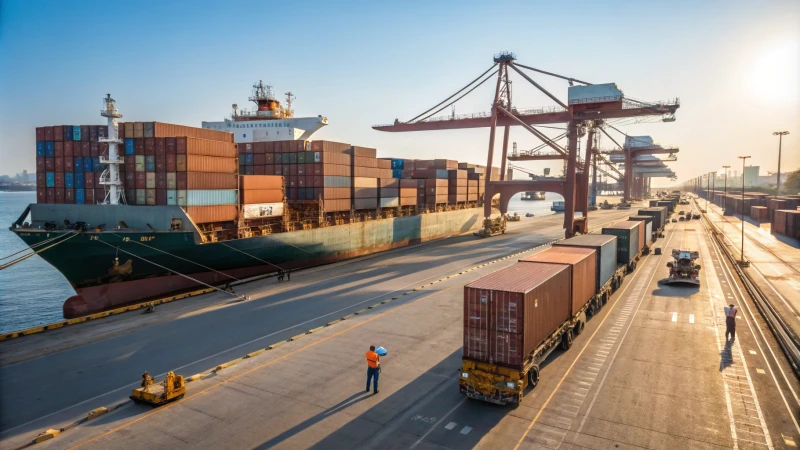Have you ever tapped your fingers while waiting for a package from China? You're not alone! Let's explore shipping times and compare Canada to the US.
Shipping from China to Canada is often slower than shipping to the US. This happens because of customs checks and different transport systems. Knowing these reasons helps you plan shipping better. This article looks at why these differences exist. These insights probably make you feel more confident in your shipping choices.
Shipping from China to Canada often feels like a long race. It's different from the quick delivery to the US. I have wondered why this happens. Many things, like how fast customs clear goods and the strength of logistics networks, really matter. These factors affect shipping times. Knowing these details helps me. I feel less frustrated when shipping. I also choose better logistics options.
Shipping from China to Canada is generally slower than to the US.True
Due to customs and logistics differences, shipments to Canada take longer.
Customs clearance is faster for shipments to the US than Canada.True
The efficiency of customs processes often favors shipments heading to the US.
What Factors Affect Shipping Times from China to Canada?
Did you ever think about why packages from China take a long time to get to your home in Canada? Let me explain the main reasons behind these shipping delays. This will help you understand the process better.
Shipping times from China to Canada depend on many factors. Geographic location is one important factor. Customs clearance efficiency also matters. The choice of shipping modes affects the timing too. Logistics infrastructure plays a role as well. Seasonal trade volume influences shipping times. These variables determine arrival speed. Understanding them helps in planning shipments better. Planning is important.
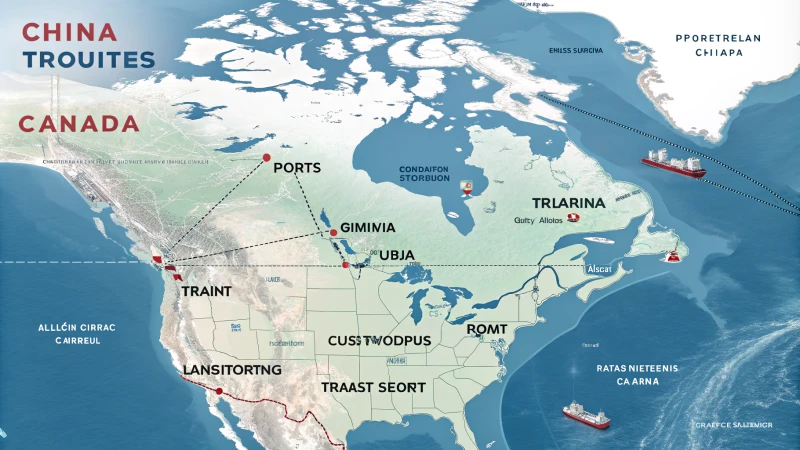
Shipping goods from China to Canada sometimes feels very confusing. I remember the first time I needed to bring electronics to sell in bulk. Tracking my shipment excited me at first. Quickly, confusion set in when the delivery took longer than expected. It became very clear that important factors influenced this complex process. Understanding these factors helped me manage expectations. It also improved my logistics plan.
Let’s explore these elements together!
Geographic Location and Shipping Routes
The geographical distance between China and Canada plays a significant role in shipping times. Different shipping routes can either expedite or delay the process. For instance, routes that avoid busy ports tend to offer faster transit times.
Moreover, the choice between air and sea freight can greatly impact shipping duration. Air freight, while more expensive, is typically much faster than sea freight, which can take weeks.
For detailed insights on specific shipping routes, check shipping routes from China1.
Customs Clearance Efficiency
Customs procedures can significantly affect shipping times. Delays during customs clearance can occur due to various factors such as incomplete documentation, inspections, or changes in regulations.
It's vital to ensure that all paperwork is accurate and complete before shipment. Engaging with a reliable freight forwarder can help navigate customs processes more smoothly.
You can learn more about customs procedures by exploring customs clearance tips2.
Shipping Modes
The mode of shipping chosen (air, sea, or land) directly influences delivery timelines. Air freight is the quickest but more costly, while sea freight is more economical but slower.
| Comparison of Shipping Modes | Shipping Mode | Average Time | Cost |
|---|---|---|---|
| Air Freight | 3-7 days | High | Urgent shipments |
| Sea Freight | 20-45 days | Low | Bulk shipments |
| Rail Freight | 10-20 days | Medium | Landlocked regions |
For an overview of cost comparisons, visit shipping cost comparisons3.
Logistics Network and Infrastructure
The efficiency of logistics networks in both China and Canada affects shipping times. An established infrastructure allows for better coordination between various parties involved in shipping.
Access to modern ports, transportation systems, and warehouses can streamline the shipping process. Efficient logistics networks can help minimize delays and ensure timely deliveries.
For insights on logistics infrastructure improvements, check out logistics infrastructure developments4.
Seasonal and Trade Volume Influences
Shipping times can also be affected by seasonal demand fluctuations and trade volumes. During peak seasons like holidays, shipping demand increases, leading to potential delays.
Additionally, unexpected events such as global pandemics or trade disputes can impact shipping logistics. It's crucial to plan ahead and consider these factors when scheduling shipments.
To understand more about seasonal impacts on shipping, refer to seasonal shipping trends5.
Air freight is faster than sea freight for shipping from China.True
Air freight typically takes 3-7 days, while sea freight can take 20-45 days, making air the quicker option.
Customs clearance has no impact on shipping times.False
Delays in customs due to documentation or inspections can significantly slow down shipping times, affecting overall delivery.
How Do Customs Procedures Impact Delivery Speed?
Ever thought about why your shipments might arrive later than expected? Customs procedures often cause these delays. These processes can really stretch your delivery time. Learn methods to simplify your shipping activities for quicker results. Gain insights into ways to avoid hold-ups in customs.
Customs procedures play a key role in delivery speed. Fast clearance cuts down on delays. Geographic location, shipping methods and logistics infrastructure influence how quickly goods pass through borders. Businesses grasp these factors. They adjust shipping strategies for quicker results. Strategies maybe improve shipping speed.
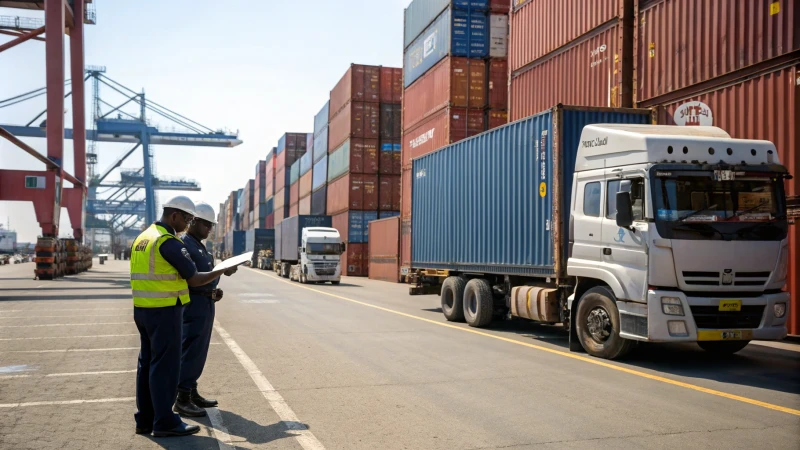
Customs Procedures and Delivery Speed
Customs procedures are vital for delivery speed. Fast clearance processes cut down delays. Things like location, shipping methods, and logistics help goods cross borders quickly.
Understanding Customs Procedures
Customs procedures are important in international shipping. I once needed electronics from China for a large order. Everything seemed perfect until customs caused a delay. Strict rules and missing papers created an unexpected wait.
In my view, customs speed greatly affects delivery times. Strict rules might cause shipments to stop for checks. This adds stress to business operations.
Geography also matters. Countries with advanced customs work quickly. I always check the customs systems of both exporting and importing countries before ordering. It's very helpful!
This geographic aspect6 highlights the need for businesses to consider the customs environment of both the exporting and importing countries.
Customs Clearance Efficiency
Customs clearance is a challenge for every shipment. Successful clearance requires accurate documents, timely paperwork, and quick inspections. When this happens, it feels very relieving.
I once hired a skilled customs broker familiar with electronics regulations. Thanks to their knowledge, my shipments passed customs easily. In contrast, I faced issues with less informed brokers, causing delays. Keeping up with customs regulations7 avoids these problems.
| Factor | Impact on Delivery Speed |
|---|---|
| Efficient Documentation | Speeds up clearance |
| Knowledgeable Brokers | Reduces errors and delays |
| Advanced Technology | Streamlines processing |
Shipping Modes and Their Influence
Shipping choice affects customs speed. I often choose air freight for urgent needs. It's more expensive but usually faster through customs than sea freight.
Once, I had to pick between air and sea freight for an important order. I chose air freight and the shipment arrived on time, satisfying my client's needs. Knowing these options helps tailor logistics by urgency and cost.
Understanding the differences between these modes can help businesses optimize their logistics strategies. For instance, choosing the right shipping mode8 based on urgency and budget can significantly influence overall delivery timelines.
Logistics Network and Infrastructure
A strong logistics network is very beneficial. Countries with good logistics systems have faster customs clearance. During trips, I saw that regions with advanced technology and efficient transport handle shipping well.
When picking logistics partners, I look at their network's strength and trustworthiness. A weak network can slow even the fastest customs, causing delays.
Businesses should evaluate their logistics partners and the countries they operate in to ensure they align with their delivery speed goals.
Seasonal and Trade Volume Influences
Let's discuss seasonality - a challenge I’ve faced often! During peak times, more trade volume might mean longer customs waits. One holiday season, customs backlogs delayed my shipments significantly.
To reduce these risks, I plan shipments carefully during busy times. By watching seasonal trends, I manage my supply chain better and avoid unnecessary delays.
Efficient customs clearance speeds up international shipping.True
Streamlined customs processes reduce delays, enabling faster delivery of goods across borders, which is crucial for businesses aiming to meet customer expectations.
Air freight always has faster customs processing than sea freight.False
While air freight generally experiences quicker customs clearance, specific circumstances may affect processing times, making it not universally true.
What Shipping Methods Can I Use for Faster Deliveries?
If you are like me, you know quick shipping is important for pleasing customers. Let's explore the different shipping methods that really speed things up!
For faster deliveries, think about express shipping, air freight and same-day delivery services. Efficient customs clearance really helps too. Freight forwarding probably keeps logistics organized for timely arrivals. Your goods arrive where they need to be. No unnecessary delays.
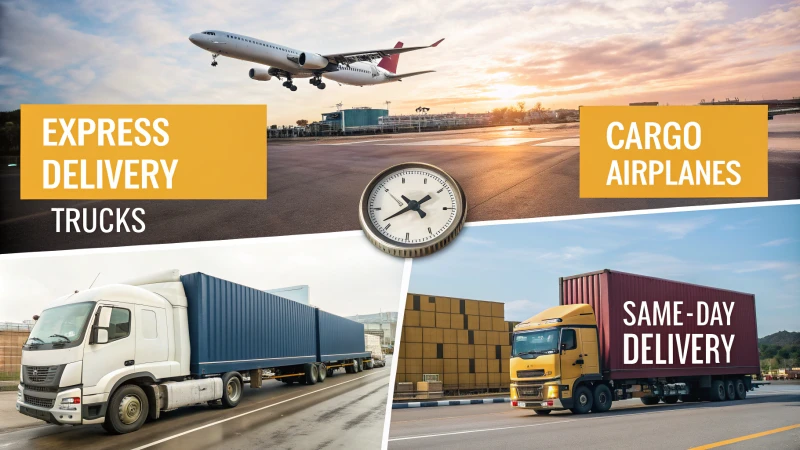
Understanding Shipping Methods for Speedy Deliveries
Choosing the right shipping method may feel overwhelming. I remember when I first started my wholesale business. Every decision seemed big, especially with shipping. Selecting the correct method could really affect my timelines. It could also impact customer satisfaction. Let’s explore the different options available for businesses like mine that prioritize quick shipping.
-
Express Shipping
Express shipping is a premium service offered by carriers like FedEx and UPS. This method guarantees faster delivery times, often within 3-7 days depending on the destination.Carrier Delivery Time FedEx Express 3-5 days UPS Next Day 4-6 days DHL Express 3-5 days -
Air Freight
For bulk shipments, air freight is a viable option. Although it is more expensive than sea freight, it ensures quicker transit times. Businesses can leverage this method for high-value goods that require timely delivery. -
Same-Day Delivery Services
Ideal for local deliveries, same-day services from companies like Postmates or local courier services can fulfill urgent needs quickly. This is particularly useful for retailers needing to replenish stock immediately.Service Provider Area Coverage Typical Delivery Time Postmates Urban areas Within hours DoorDash Urban areas Within hours -
Freight Forwarding
Working with a freight forwarder like Gofreighter can simplify logistics and expedite customs clearance, crucial for international shipments. They can manage air and sea freight options tailored to your needs while ensuring compliance with regulations.Discover how freight forwarding can enhance your shipping10.
-
Customs Clearance Services
Fast customs clearance is essential for ensuring that shipments don’t face delays at borders. Engaging a customs broker can streamline this process, allowing for quicker release of goods. -
Regional Carriers
In some cases, regional carriers might offer faster delivery for specific areas compared to national carriers, especially for local deliveries. This can be an affordable solution for companies focusing on regional distribution. -
Technology-Driven Solutions
Leveraging technology in logistics, such as real-time tracking and automated fulfillment systems, can drastically reduce delays in processing and shipping. Tools that integrate with your inventory management systems allow you to stay ahead of delivery timelines.
Express shipping guarantees delivery within 3-7 days.True
Express shipping services like FedEx and UPS ensure deliveries are made quickly, typically within a few days depending on the destination.
Same-day delivery is only available in rural areas.False
Same-day delivery services are primarily available in urban areas, making them ideal for quick local deliveries, not rural locations.
How Do Seasonal Trends Affect Shipping Durations?
Do you ever think about how seasons affect shipping timelines? Seasons really change logistics plans. These trends can cause delays or disruptions. Let's look at ways to keep everything running well.
Seasonal trends greatly affect how long shipping takes. Demand, weather and customs efficiency change at different times of the year. Business owners really benefit from knowing these factors. My business improves logistics during busy times by understanding them. This knowledge helps operations run smoothly. Deliveries arrive on time.
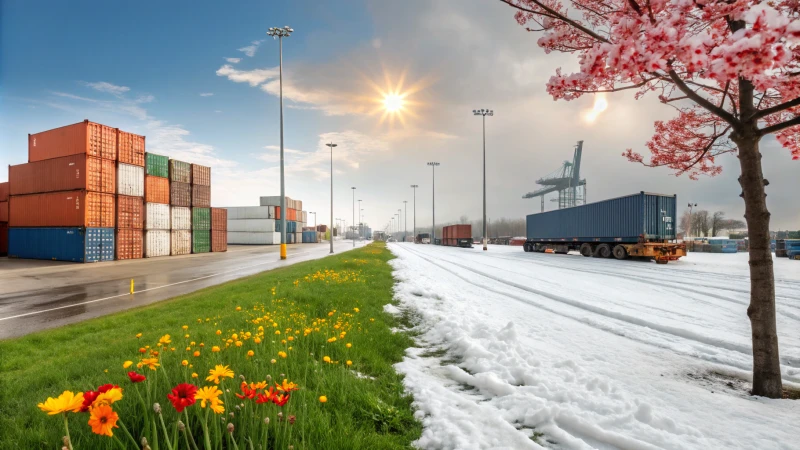
Understanding Seasonal Trends in Shipping
Shipping for my wholesale business always shifts with the seasons. Seasonal trends have a major impact on how fast or slow goods reach their destinations. Holiday shopping and sudden weather changes often disrupt our schedules, leading to delays in logistics and delivery.
Demand Fluctuations During Peak Seasons
During the holiday season, demand for electronics increases dramatically. Events like Black Friday12 and Christmas lead to a rush. Retailers work hard to ship their stock promptly. Shipments might even double or triple during these times. As a result, shipping lanes become crowded and delivery times extend. Understanding when these peaks happen allows me to stock up and adjust my shipping plans.
- Example: My team faced high shipping demands last winter. This led to delays. It was stressful! Proper planning could have kept us organized.
Weather Conditions and Their Impact
Weather surprises us often. Snowstorms and hurricanes can cause big problems for shipping. For instance:
| Season | Typical Weather Impact | Possible Delay (days) |
|---|---|---|
| Winter | Snowstorms, ice | 2-5 |
| Summer | Hurricanes | 3-7 |
| Spring/Fall | Rain, flooding | 1-3 |
Snow might stop deliveries and hurricanes can disrupt coastal routes. I learned that knowing these patterns helps tackle logistics issues. Understanding seasonal weather variations helps minimize surprises in operations.
Managing these delays is key. This strategy allows me to set realistic expectations with my clients.
Customs Clearance and Seasonal Backlogs
Customs clearance becomes tricky during busy periods. Peak seasons bring floods of shipments, overwhelming the system. Backlogs can delay deliveries significantly. I’ve realized strategies are needed to speed up customs processes during peak times. This prevents disruptions in the delivery timeline.
Adapting Shipping Strategies for Seasonal Trends
Over time, I’ve discovered practical methods to face these seasonal challenges:
- Plan Ahead: Knowing when peak seasons happen allows effective inventory and shipping management.
- Diversify Shipping Options: Multiple carriers help avoid problems with just one provider.
- Communicate with Partners: Regular updates with logistics partners help prepare for possible delays.
Exploring seasonal logistics management13 practices could transform logistics strategies throughout the year.
Shipping durations increase during peak holiday seasons.True
Higher demand during holidays like Christmas leads to congested shipping, resulting in longer delivery times.
Severe weather has no effect on shipping delays.False
Extreme weather conditions like storms can disrupt routes and extend transit times significantly.
Conclusion
Shipping from China to Canada often takes longer than to the US due to customs checks, logistics infrastructure, and seasonal demand fluctuations.
-
Discover comprehensive insights into how different factors influence shipping times to optimize your logistics strategy. ↩
-
Learn effective customs clearance strategies that can save you time and money during international shipments. ↩
-
Compare various shipping modes to choose the best option for your needs based on time and cost. ↩
-
Explore the latest improvements in logistics networks that could enhance your shipping experience. ↩
-
Stay informed about seasonal trends that impact shipping schedules and plan accordingly. ↩
-
Explore this link to understand the complexities of customs processes and how they can affect your shipping timelines. ↩
-
Learn about the latest customs regulations and tips for efficient clearance processes to enhance your delivery speed. ↩
-
Find insights on various shipping modes and their impact on delivery speeds during customs processing. ↩
-
Clicking this link will provide you with deeper insights into air freight options and how they can benefit your business. ↩
-
Discover how freight forwarding services can enhance your shipping strategy and improve delivery speed. ↩
-
Learn about regional carriers and how they might offer faster options compared to larger national companies. ↩
-
This link provides valuable insights into managing shipping during peak seasons, helping you streamline your logistics processes effectively. ↩
-
Explore strategies to mitigate delays caused by weather disruptions and improve your supply chain resilience by clicking this link. ↩

